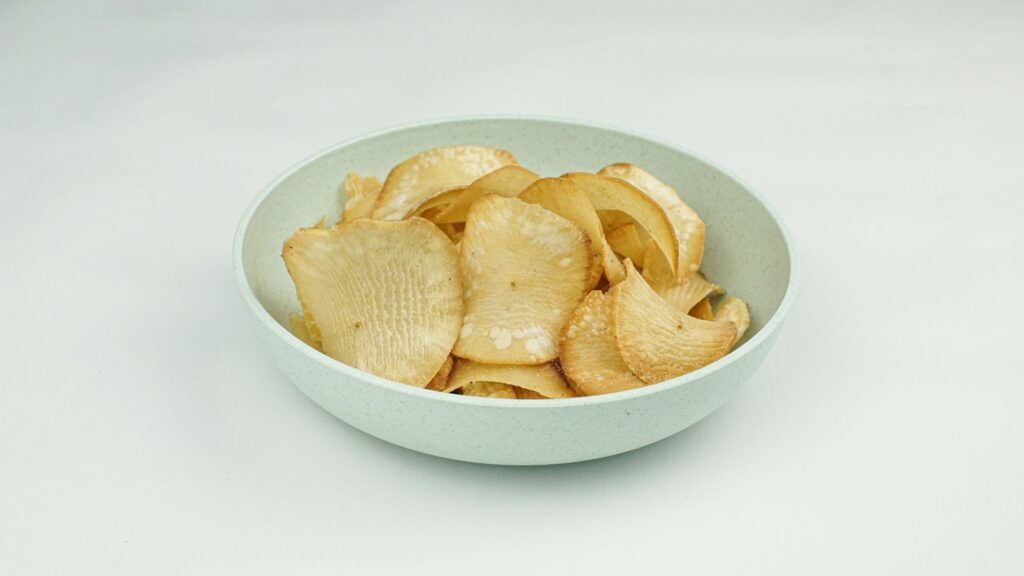
Cassava is fast becoming more than just a traditional staple food in Kenya. Across the country, it’s now being turned into a wide range of value-added products—from crisps and flour to animal feed and starch—that are opening up exciting new opportunities for small businesses and young entrepreneurs.
With millions of young Kenyans currently unemployed, these cassava-based ventures are helping to fill the gap by creating creative jobs, youth-led SMEs, and sustainable income streams, especially in rural areas. From counties like Busia and Kitui to Kisumu and beyond, young people are building businesses around cassava processing, packaging, and product innovation—proving that this hardy root crop can power real economic change.
Why Cassava Matters Now More Than Ever
Cassava is a drought-tolerant crop that thrives in Kenya’s arid and semi-arid regions. It’s easy to grow, resilient to harsh weather, and capable of feeding families even when other crops fail. But its real potential lies in what happens after harvest.
Instead of selling fresh cassava at low prices, farmers and entrepreneurs are now adding value through processing, branding, and packaging. This shift is helping:
– Create youth employment
– Build small and medium enterprises (SMEs)
– Reduce post-harvest losses
– Promote food security and nutrition
Popular Cassava Value-Added Products in Kenya
Here are some of the most common cassava-based products currently being produced by young innovators, SMEs, and cooperatives:
1. Cassava Chips (Dried)
How it’s made: Cassava roots are peeled, sliced, and sun-dried or oven-dried until crisp.
Who’s making it: Youth groups and cooperatives in Busia and Kisumu.
Use: Sold as a raw material for flour milling or as a snack base.
Income potential: Higher shelf life and better profit margins than raw cassava.
2. Cassava Flour
How do it’s made: Dried cassava chips are milled into fine flour.
Use: Used to make ugali, porridge, pancakes, and baked goods. Can be blended with wheat, millet, or sorghum.
Health bonus: Naturally gluten-free and suitable for people with wheat intolerance.
Business angle: Cassava flour fetches a higher market price and is growing in popularity in urban health food markets.
3. Cassava Crisps (Kachiri)
How it’s made: Fresh cassava is thinly sliced, deep-fried, and seasoned.
Use: Sold in small packets as a snack—popular at the coast and in urban centers.
Youth opportunity: Young food vendors and processors are packaging crisps under their own brands for sale in shops and online.
4. Animal Feed
How it’s made: Peels and cassava waste are dried and mixed with other ingredients like soybean meal.
Use: Used as feed for poultry and livestock.
Value: Converts farm waste into useful input, reducing feed costs and supporting agribusiness sustainability.
5. Cassava Starch
How it’s made: Extracted from cassava pulp after grating and settling in water.
Use: Used in baking, textile, paper, and pharmaceutical industries.
Industrial potential: Opportunities exist for small-scale starch processing plants supplying to local manufacturers.
6. Fortified Cassava Foods
Examples: Biscuits, baby foods, cakes and mandazis made by blending cassava with other nutrient-rich ingredients like sweet potato or legumes.
Who’s innovating: Youth agripreneurs and women’s groups supported by NGOs and government programs.
Why it matters: Helps tackle malnutrition while creating new product lines.

Real-Life Impact: Youth & SMEs Transforming Cassava
In Busia County, a youth-run cooperative is producing cassava flour and crisps, supplying local markets and school feeding programs.
In Kitui, companies like GIRAYS Ltd are turning locally grown cassava into flour, starch, and animal feed—creating jobs for over 450 contract farmers and processors.
In Kisumu and Siaya, young entrepreneurs are packaging branded cassava chips and crisps for supermarkets and export markets.
Several women-led groups in Nakuru and Kakamega are baking gluten-free cassava cakes and biscuits for health-conscious consumers.
Health Benefits of Cassava
Cassava is not just a versatile crop—it’s also nutritious:
- High in carbohydrates: A great energy source, especially for active youth and manual laborers.
- Vitamin C: Boosts immunity and supports skin and tissue repair.
- Cassava leaves: When cooked properly, they’re rich in protein, iron, and vitamin A.
- Gluten-free: A safe option for people with celiac disease or gluten sensitivity.
Note: Raw cassava contains natural toxins (cyanide compounds), but these are safely removed through proper peeling, soaking, drying, or cooking.
What Makes Cassava Value Addition a Youth Game-Changer?
✔️ Low entry barrier – Requires minimal capital to start small-scale processing.
✔️ Wide market – Urban consumers, schools, supermarkets, and even export markets.
✔️ Business diversity – From farming and drying to milling, branding, and selling.
✔️ Climate-smart – Grows well in dry areas where other crops fail.
✔️ Government support – Ongoing investments and training in agribusiness and climate resilience.
Final Thoughts
Cassava’s transformation from a traditional root crop to a value-added agribusiness opportunity is changing lives in Kenya. For the youth, it offers more than just food security—it’s a chance to innovate, build brands, earn income, and solve one of the country’s most pressing challenges: unemployment.
As more Kenyans embrace cassava processing, branding, and product development, the crop is proving that agriculture isn’t just for the past—it’s a key part of Kenya’s entrepreneurial future.
Also read: Sweet potato value-addition Kenya

Disclosure: This banner contains an affiliate link. I may earn a commission if you purchase through it, at no extra cost to you.
